The North Woods paddle
The great thing about canoeing and refining your paddling technique is that it never ends. There is always something new to learn, improve or refine. It is a lifelong learning curve with new insights and discoveries all the time. For example, I recently fell completely under the spell of the North Woods paddle and stroke.
In recent years, customers have regularly asked me whether I would be able to make a North Woods paddle. I could, but when I asked what that particular paddle might look like, I usually got no more explanation than that it was a beavertail paddle with a graceful long grip.
Given the limited nature of the information, I had to investigate myself and it turned out that an entirely new and exciting aspect of canoe culture emerged. The North Woods paddle is the traditional paddle preferred by the Maine Guides, but it has been around for centuries and was developed and used by the Passamaquoddy, Abenaki and Penobscot natives. It takes its name from the region of Maine, the North Woods. There it was used to navigate rivers such as the Allagash.
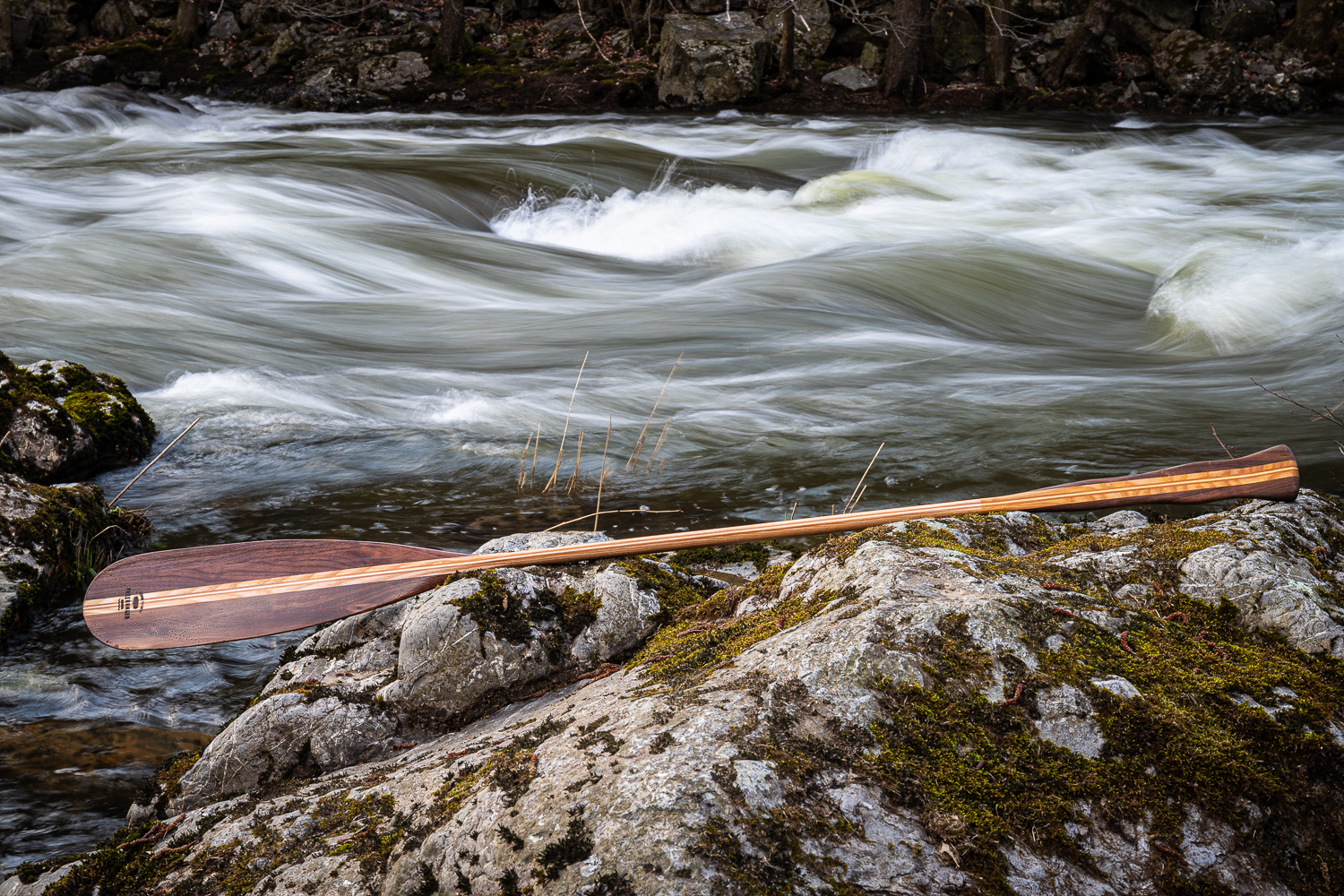
The first thing you notice when you see a North Woods paddle is the unusually shaped grip. It’s long and gracefully tapered and it allows you to easily move your hand up and down to lengthen or shorten the shaft. All this because the natives and the Maine Guides had to be able to paddle standing up to be able to oversee the rapids on the river. Of course they also had to be able to paddle while kneeling or sitting. Hence the need for a paddle that can vary in length.
A second remarkable feature is the size of the blade. It is, by our standards, a large beavertail with a good catch. It is ideally suited to negotiate rapids and to keep the canoe well under control in wind and waves on flat water. It is a very versatile paddle that can be used in a variety of conditions.
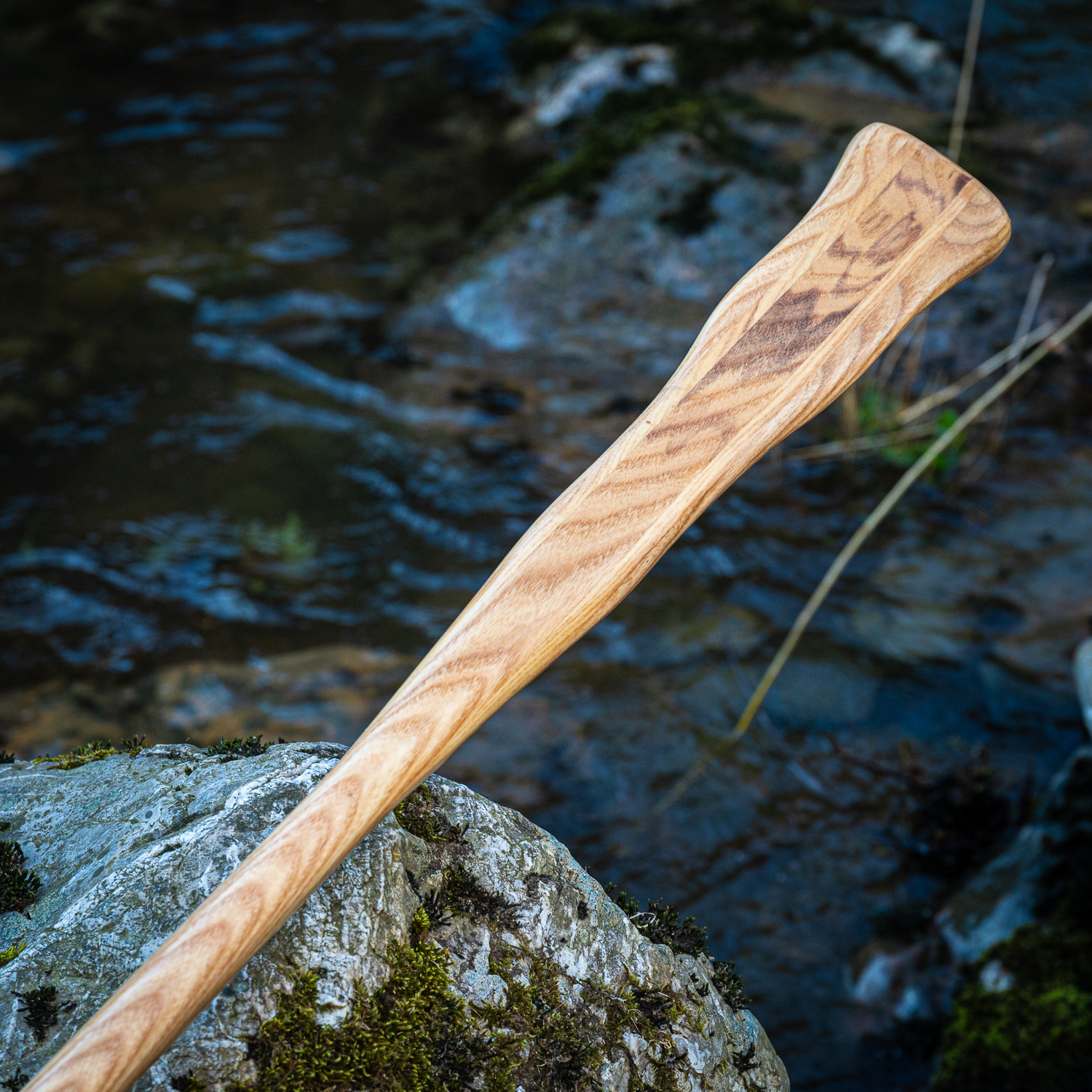
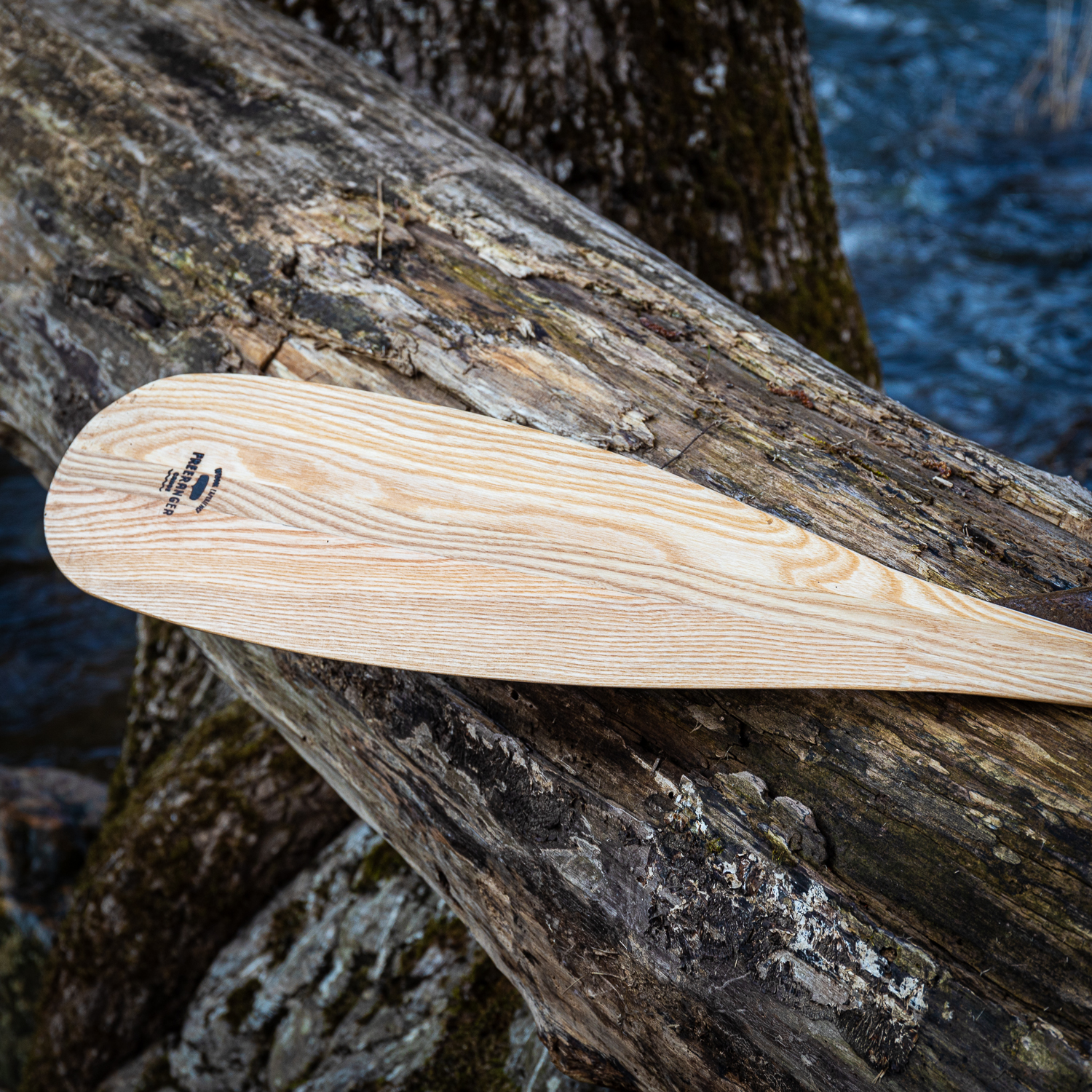
The magic of the North Woods stroke
But the special thing about the paddle is the efficient technique you use to make the forward stroke and steering correction. There is not much documentation about the correct implementation of the North Woods Stroke. Two names that take center stage are Garrett and Alexandra Conover Bennett. They have been professional canoe and snowshoe guides since 1980 and are registered Maine Guides. They specialize in traditional wilderness travel. In an excellent article in Wooden boat Magazine 1985/67, Garrett describes the North Woods paddle as follows:
“Many a paddler has stood in mystified silence watching a skilled team of North Woods travelers plying their seemingly delicate paddles across the waters of canoe country. Somehow it seems impossible, or at least improbable, that large, loaded traveling canoes could be propelled with so little apparent movement by the paddlers, with such fluid grace that scarcely raises a ripple to hint of the path of the paddle. Yet the canoe, as if governed by a mystical force, not only behaves, but behaves quickly, cleanly – the way an arctic char might use the water of it’s realm. Much of the secret lies in the paddle, and the technique best suited to its use. With practice, much that is mysterious at first settles into a sophisticated balance of properties that blend canoe, paddler, and paddle into graceful harmony.”
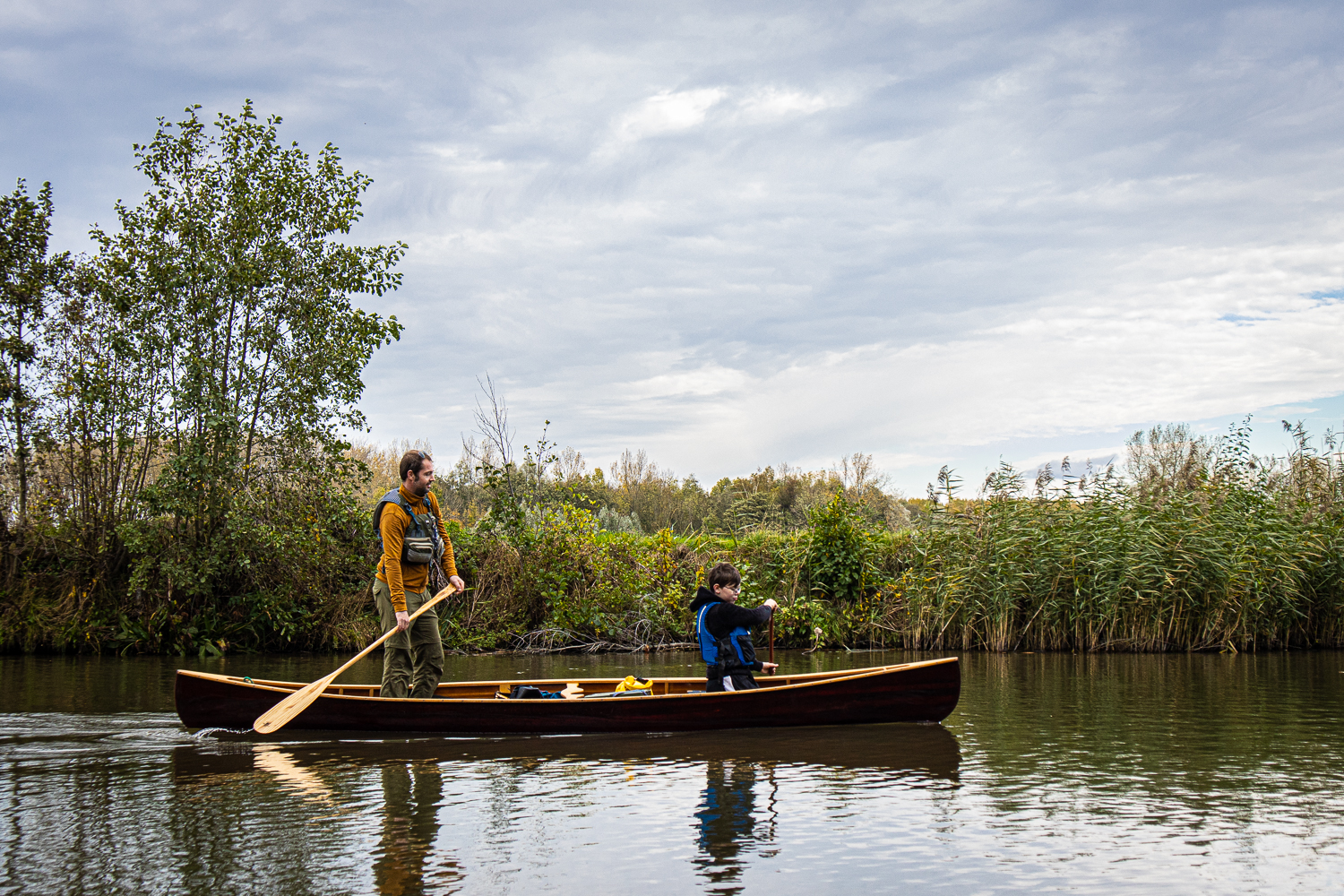
Further in the article, he compares the North Woods Stroke to the J-stroke:
“The J-stroke overuses a few muscles and expends a lot of needless energy. In addition, you need to compensate continually for not heading in the direction you want to go. You end up crabbing down the length of a lake. The North Woods stroke places all your muscles in a line and uses them all a little bit. It is a very efficient stroke involving subtle arm and body movements that enable you to paddle all day with little fatigue. The paddle flexes instead of your back.”
In an earlier article in the same magazine (1983/55), aptly titled “Paddle like an Ancient” Garrett’s wife, and legendary paddle maker, Alexandra, says:
“I doubt if a person can learn the stroke by book or even by movie. But if a person is lucky enough to learn it from somebody who knows how, improvement is so dramatic there is no going back. It’s like learning to walk after years of crawling.”
So although I have been warned by an expert and I am aware of the inadequacy of words to describe something as complex as a paddle stroke, I still want to give it a try.
First and foremost, there is the seating position. You sit turned to your paddling side with your knee against the gunwale. Your shaft hand rests on your thigh and stays there for almost the entire stroke. It acts as a fulcrum. The way you hold the paddle with your upper hand is also different from a classic paddle. You do not put your hand over the grip but you cradle it over the side.
At the initiation you lean back for a moment and put the paddle in the water just in front of the knee. At the beginning of the power phase, the upper hand is pushed forward and you also move your upper body forward. You then complete the power phase with a torso rotation. At the end, move your shaft hand to your hip. The power phase is very short, around 50 cm.
The steering correction takes place during the recovery by slicing the blade forward through the water while applying light pressure. You lean your upper body forward.
To get back to the starting position, the blade only comes out of the water for a short while, after which the whole process starts over again.
A very good resource to learn how to get started is Becky Mason’s Advanced Solo Canoeing. She demonstrates the North Woods Stroke excellently. To my knowledge, it is the only instructional material about North Woods currently available. More info on Becky’s site: www.redcanoes.ca
The North Woods paddles we make are based on the plans of Alexandra Conover Bennett as published in Wooden boat Magazine 1983/55.
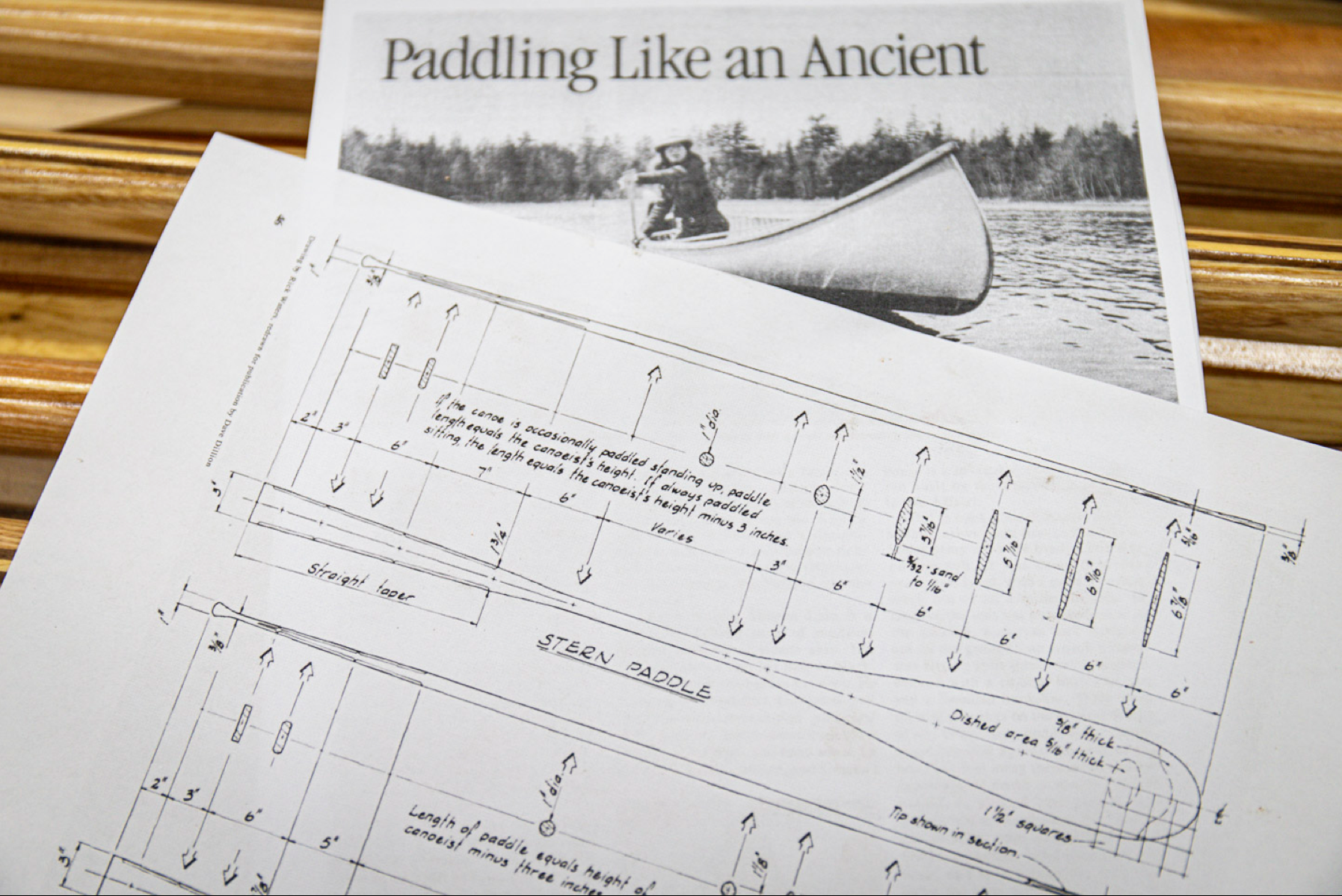
There is a version for the bow paddler with a slightly smaller blade than that for the stern paddler. The paddles are made in solid ash or laminated from ash, cherry and walnut. If you paddle standing up regularly, the length of the paddle is equal to your height. If you always paddle while sitting down, you subtract 8 cm. Shop now.
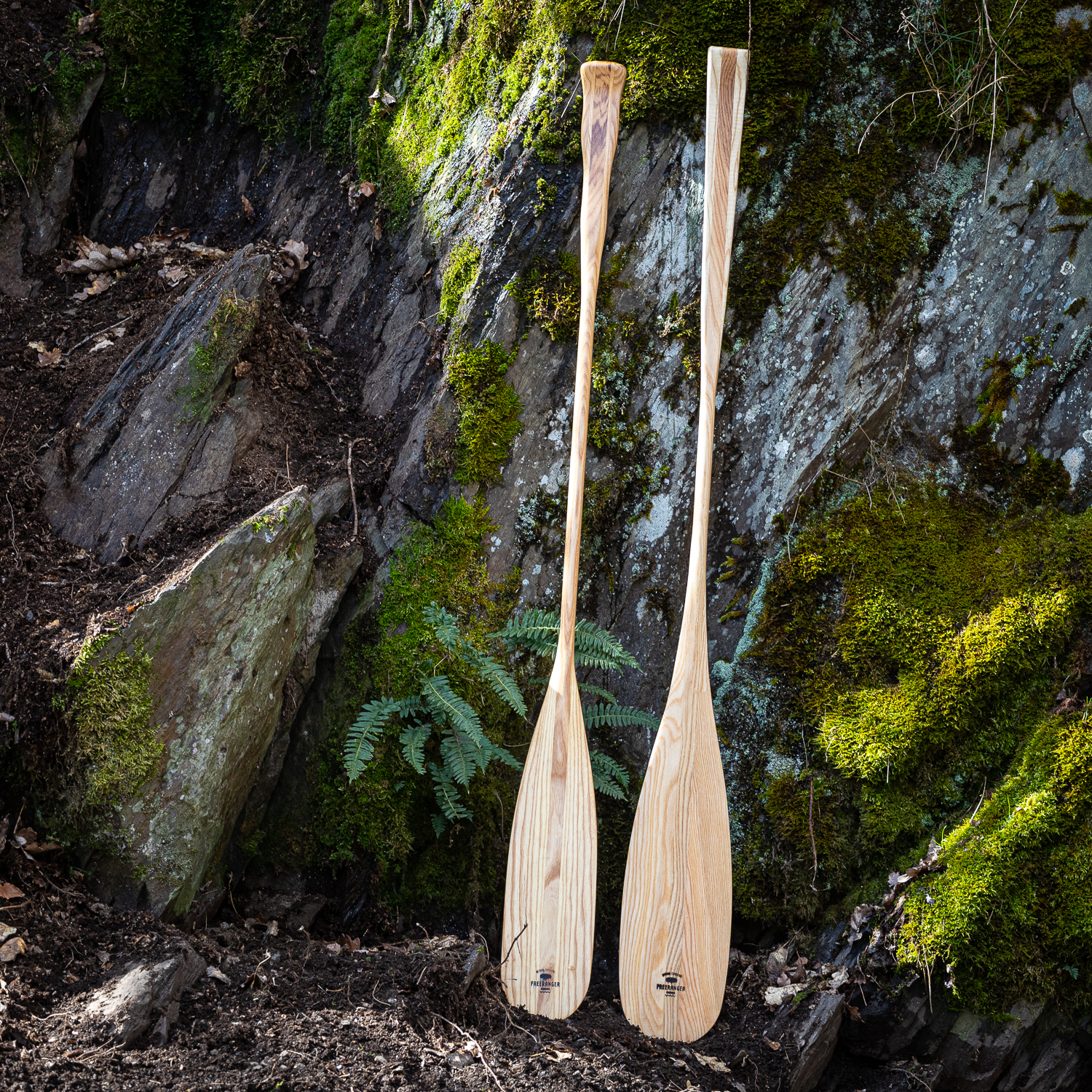
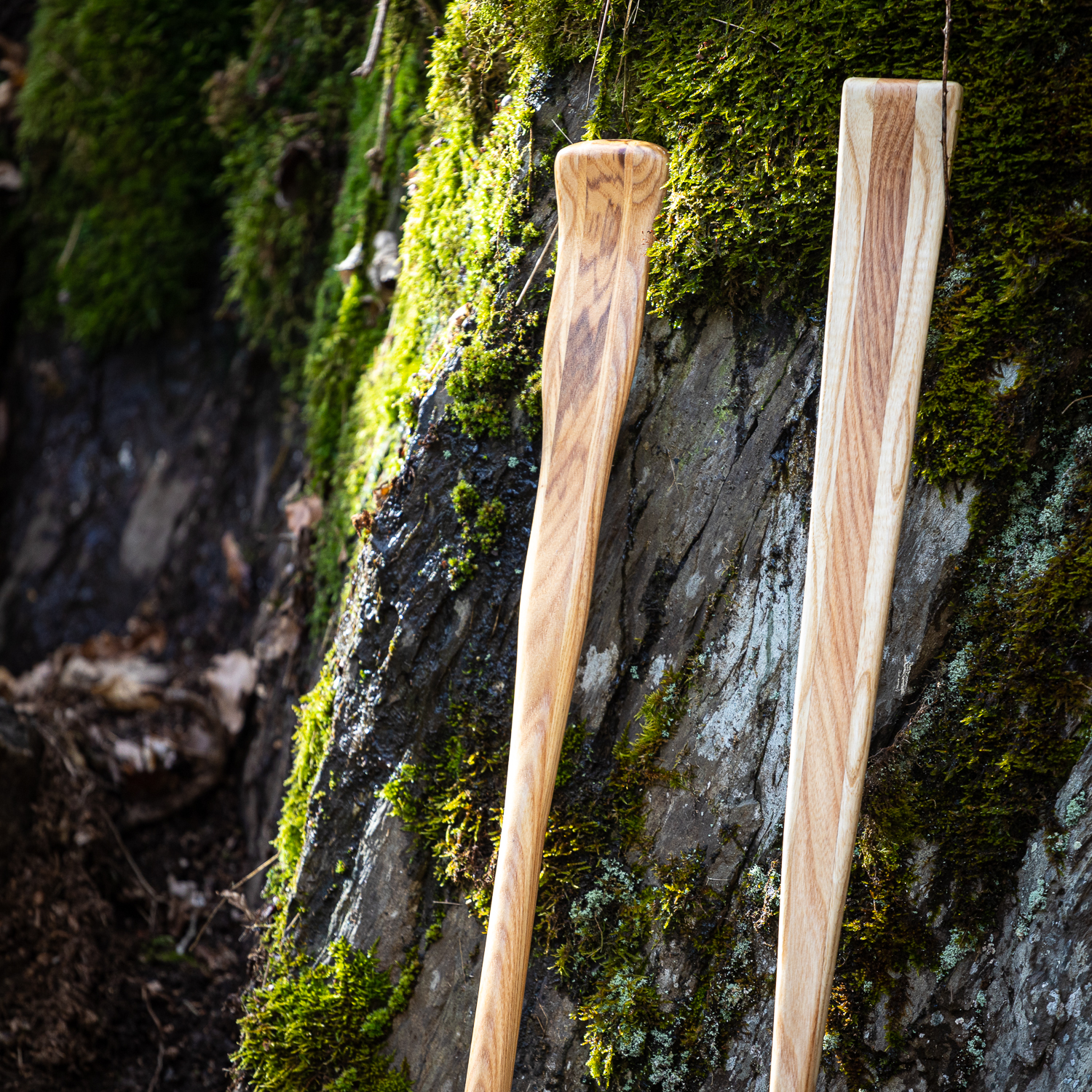
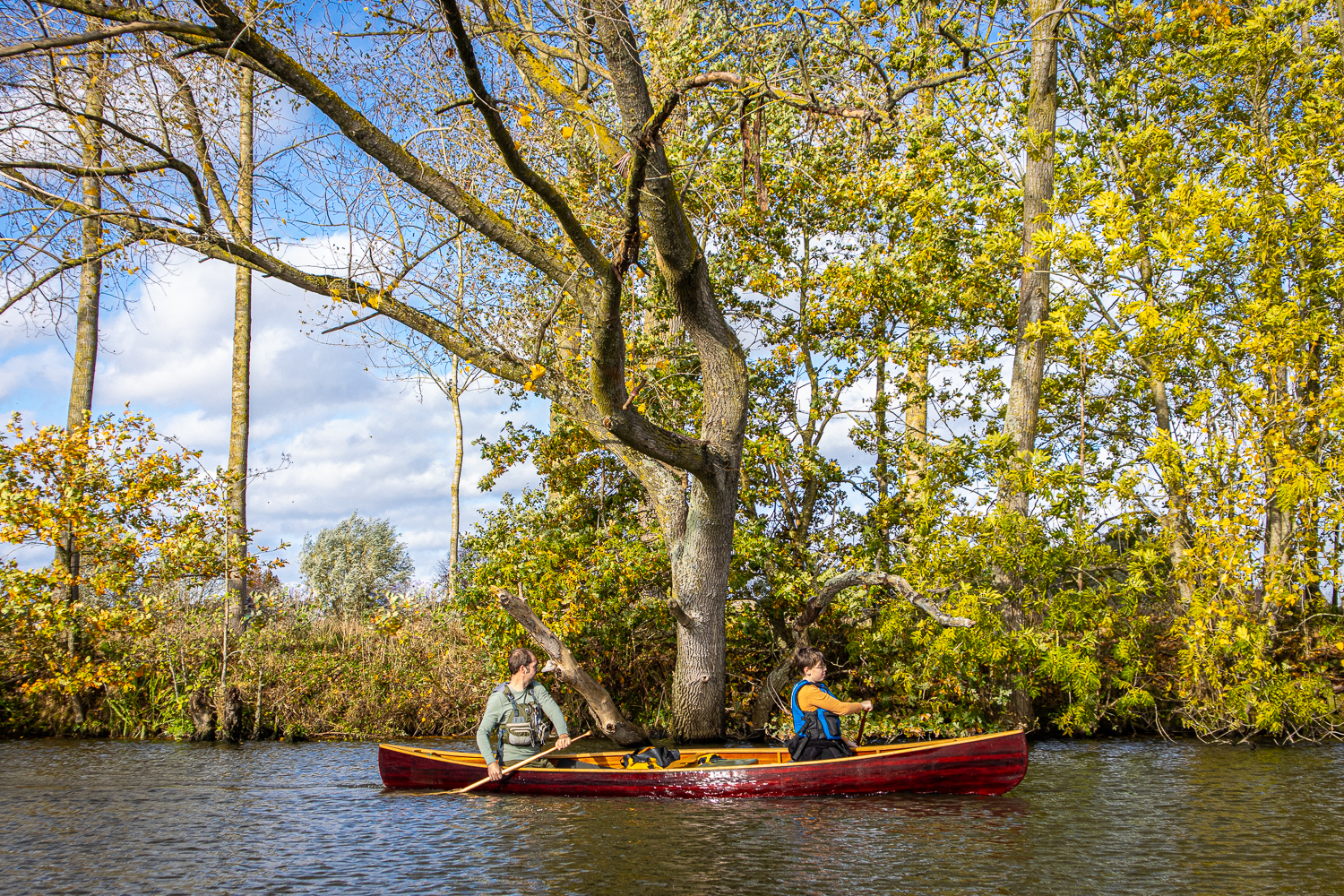
If you want more info about the Conovers and the North Woods lifestyle, you can find an interesting interview with the couple on YouTube:

